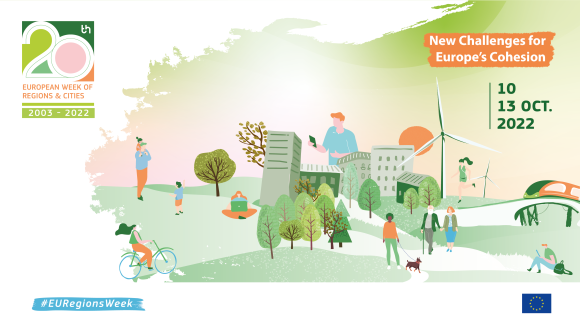
As the 2022 European Year of Youth comes to an end and the 2023 European Year of Skills begins, one way to build a bridge between them is the EU’s concerted effort to include young people in Research and Innovation (R&I) policies.
Anna Panagopoulou, Director for European Research Area & Innovation for the Directorate General for Research & Innovation at the European Commission, points out that integrating young scientists into R&I shapes the field’s future sustainability at an environmental, social, and financial level. Young people can visualise their career in new ways, are open to unconventional possibilities, and can be the drivers of these changes.
Investing in youth benefits regions at a local level as it helps to prevent domestic or international migration of highly skilled people. EU-wide youth unemployment rose for the first time since 2013 during the pandemic.
The European Recovery and Resilience Facility is making a concerted effort towards reinvigorating regional R&I, which has the potential to be a central strategy in tackling youth unemployment. By focusing on value added jobs, within sectors such as R&I, the EU avoids needing to compete with labour costs outside the region.
Rosa Arias, CEO & Founder of Science for Change, has worked on a project to democratise science in Barcelona the past year. Science for Change has been instrumental in implementing a bottom-up approach to science in praxis, that increases science literacy in the general population and inspires future scientific career choices.
The project documented environmental odour by utilising the public as an essential contributor to research through data-collection with an app, which has not only led to scientific advancement but also EU level policy change on the environment. Furthermore, to ensure that something as cerebral as research also had a material dimension that we can touch and feel, it brought odour to public spaces. Displays and experiments on the science of odour were set up at libraries and schools, and scientists got to work on collaborations with museums.
Approaching research from a holistic perspective, not only includes the general public but also incorporates interdisciplinary studies. The humanities can be included in the science communications aspect of a project, and arts in the visualisation aspect. It creates a research ecosystem that includes everyone from primary school students to senior career researchers.
The regions and cities can play an important role in motivating students by facilitating this collaboration. As Ms Arias reminded us, “science is everywhere, [people] have the tools, all they need is the policy”.
Christine Chang, Project Director for Helsinki-Uusimaa Regional Council, argues that we should expand R&I to make it more well-rounded, not focusing strictly on STEAM research, but also on education in general.
Chang views the R&I life cycle as currently divided in three separate parts: Scientists who looks for answers to questions, innovators who use those answer to find solutions to problems, and entrepreneurs who makes the solution profitable. Entrepreneurs must have the qualities of motivation, curiosity, experimentation, and accountability according to Chang.
She would like to combine the currently disparate parts of this life cycle, but entrepreneurship education has been lacking from regional policy. According to Chang, it should be embedded in policy, so students do not fear pursuing a potentially difficult path. The university researchers in Chang’s region in Helsinki develop many projects together with companies.
This proposed alternative bottom-up approach enables regions to engage all stakeholders on innovation projects, with universities and companies both looking to policymakers for guidance. Regional electees have an active role in motivating students to enter R&I, and being spearheads at making the regions more open, inclusive, and not least innovative places.
Nina Bo Wagner | Edited by Xoel Rodríguez Poy



